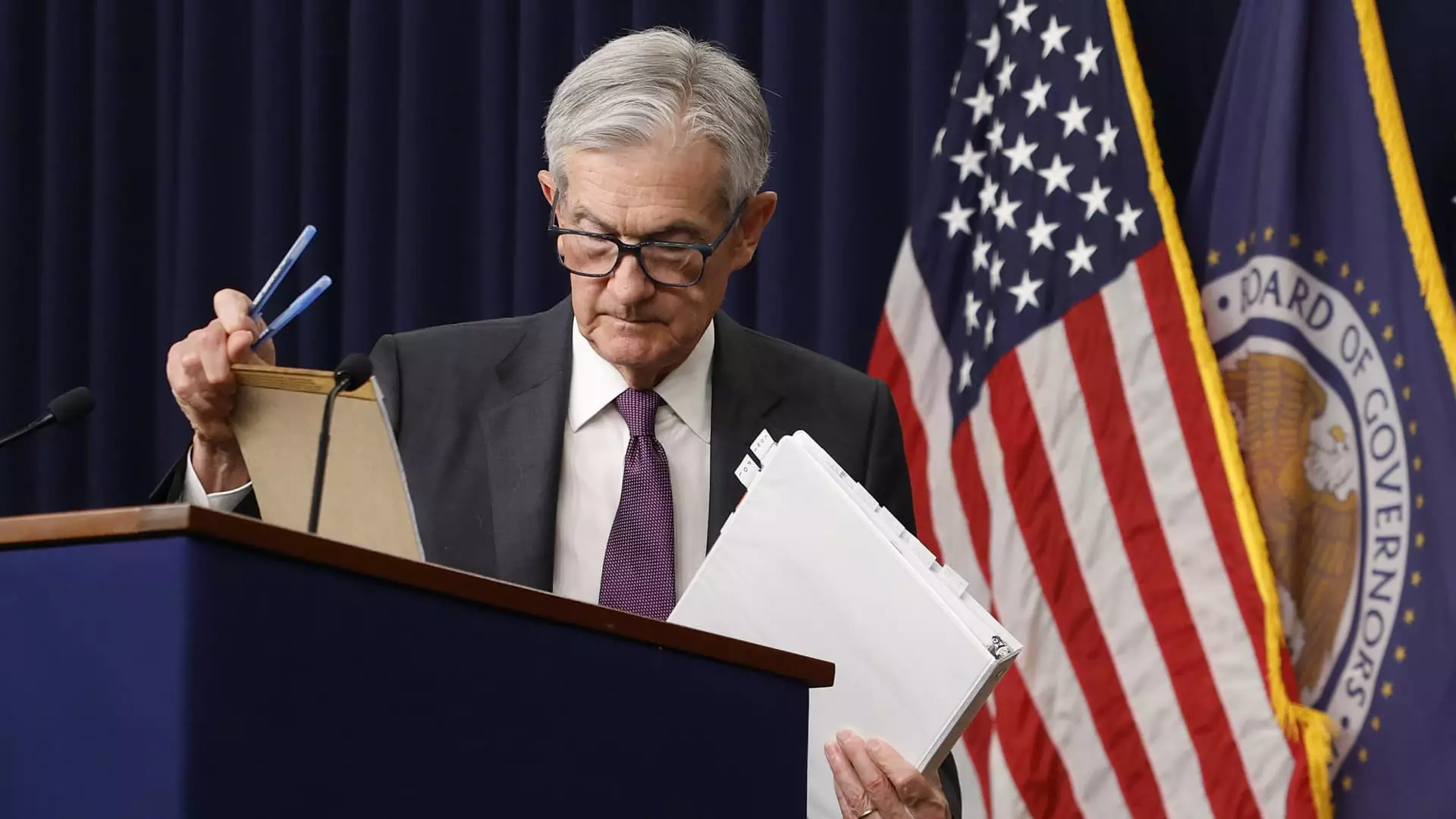As the ongoing economic turbulence continues to unfold, Federal Reserve Chair Jerome Powell’s recent remarks reveal a deep-seated dilemma lurking within the central bank’s dual mandate: maintaining stable prices while ensuring maximum employment. In the face of rising inflation and sluggish growth, Powell’s message is clear: the Fed is walking a tightrope, and the outcome is uncertain. The framework within which the Fed operates is set against administrative policies that impose tariffs, further complicating these economic goals. It raises a crucial question: can the Federal Reserve sustainably achieve two conflicting objectives at once without undermining one for the sake of the other?
The intricacies of this challenge are accentuated by President Donald Trump’s trade policies, which introduce unsettling variables into the economic arena. Powell has highlighted that the sheer scale of these tariffs presents an imbalance; while they could temporarily drive inflation higher, they also bear the risk of stifling economic expansion. This complexity is a stark reminder that the economic landscape is not just driven by numbers but is susceptible to political maneuvers that create unpredictable ripples in the market.
Tariffs: A Double-Edged Sword
Tariffs, effectively a new tax levied on imports, could be viewed as a temporary tool for controlling domestic market competition. However, Powell’s insights indicate a more troubling reality. He openly acknowledges that these tariffs are likely to cause inflationary pressures—pressures that could linger beyond their initial implementation. An overwhelming tide of evidence suggests that businesses are strategizing around these tariffs, stockpiling imports ahead of expected price increases. Thus, while these measures may generate revenue for the government, the immediate fallout is a net negative for consumers who ultimately bear the brunt of inflated prices.
What is particularly concerning is that Powell’s projections indicate that inflation is anticipated to reach 2.6%—a figure that exceeds the Fed’s targeted rate. Such growth could signal a precarious moment for the U.S. economy, highlighting just how sensitive the Fed’s policy adjustments must be in the turbulent waters of trade negotiations and economic forecasting.
The Fed’s Reaction: A Stagnant Approach or Necessary Caution?
In his speech, Powell refrained from committing to any specific course of action concerning interest rates. Instead, he presented a more conservative stance, preferring to wait for clarity before enacting any changes. This aversion to quick decisions may be viewed as wise, yet it also raises alarms about potential inaction in an already fragile economic environment. As stocks tumbled in response to Powell’s cautious words, it becomes evident that investor confidence could be on a precarious precipice, with market players eager for clear signals from the Fed.
Powell’s assessment of the economy as being in a “solid position” despite the anticipated slowdown is an argument that requires scrutiny. With retail sales showing robust increases—largely driven by anticipatory car purchases in light of tariffs—one must consider the sustainability of growth that’s significantly derived from consumer behavior conditioned by government policy. Are we witnessing healthy economic expansion, or merely a temporary spike born from shortsighted strategies?
The Road Ahead: Navigating Between Inflation and Employment
The overarching concern is the inherent contradiction that arises when attempting to cater simultaneously to inflation control and employment goals. If higher inflation necessitates interest rate hikes, the resultant dampening effect on economic growth could undermine the quest for full employment. Conversely, rate cuts aimed at stimulating growth can exacerbate inflation, creating a vicious cycle of conflicting priorities.
As Powell himself noted, there are times when the Fed may need to choose which path to pursue more aggressively depending on the economic landscape. However, this leads to a fundamental point: in the throes of such significant uncertainty, how far can the central bank sway before it forfeits its credibility? Economists are split on whether remaining firmly committed to dual mandates is feasible or if nuanced approaches tailored to changing circumstances would better serve the economy.
The implications of Powell’s remarks resonate loudly: the Federal Reserve is at a crossroads, one that underscores the intersections of politics, economics, and policy-making. The choices made today will mold the economic environment of tomorrow and will determine whether we navigate towards stability or volatility in the years to come.

